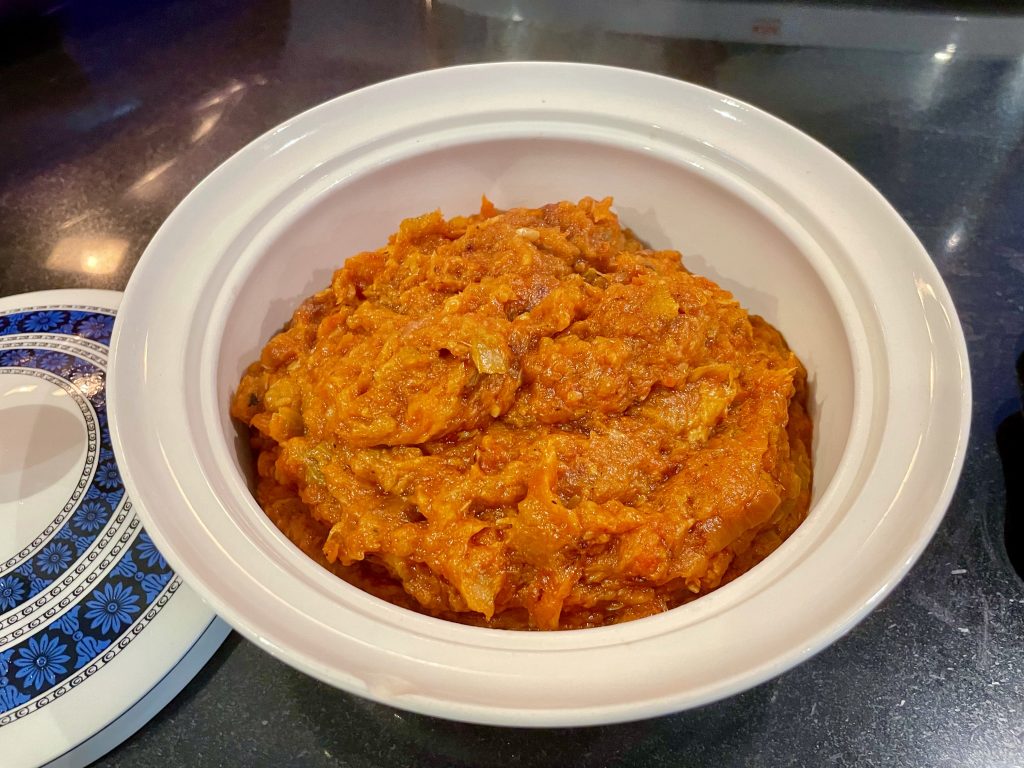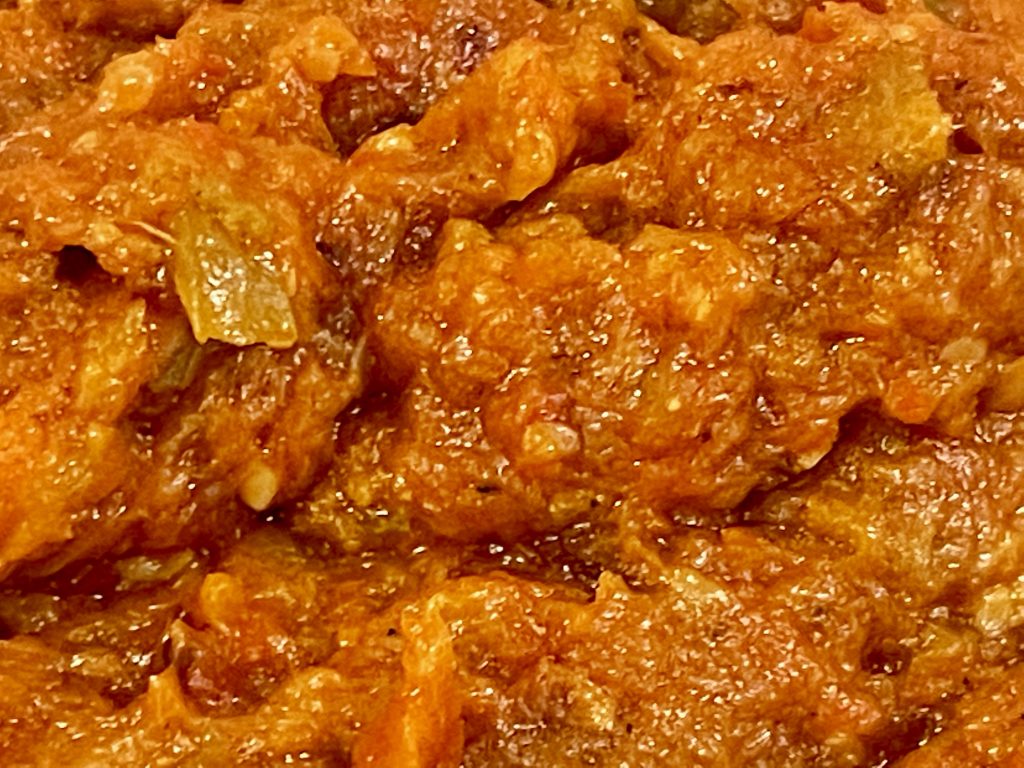Discover the Fresh Flavors of Low-Histamine Ikra
If you’re craving a bold appetizer that aligns with a low-histamine lifestyle, this Low-Histamine Ikra or Igra recipe is just what you need. Traditionally, Ikra is a rich Russian spread made with tomatoes and eggplants. But for anyone following a low-histamine diet, those ingredients pose a problem. Luckily, with a few smart swaps, you can enjoy all the comforting flavors of Ikra—without the histamine triggers.
A New Take on a Classic Appetizer
Creating a low-histamine version of Ikra starts with rethinking the basics. Instead of eggplants, which can cause reactions for many, we use zucchini (also called courgette). It cooks down to a soft, rich base that mimics the creamy texture of traditional Ikra.
Next, we replace the usual tomatoes with roasted red bell peppers. These bring a similar tang and color without the histamine spike. The result? A flavorful, vibrant dish that feels familiar but is gentler on your body.
Why Low-Histamine Recipes Matter
Low-histamine diets are gaining traction—especially among people dealing with Long COVID or Mast Cell Activation Syndrome (MCAS). After a viral infection, some individuals notice symptoms like fatigue, brain fog, or rashes linked to histamine sensitivity. In these cases, food can either calm or trigger symptoms. That’s why more people are turning to low-histamine cooking for relief.
But even if you don’t follow a restricted diet, this version of Ikra is worth a try. It’s vegan, allergy-friendly, and packed with flavor. Plus, it’s a great way to add variety to your usual appetizers or side dishes.
Simple Ingredients, Big Flavor
This Low Histamine Ikra comes together with just a handful of wholesome ingredients. You’ll need zucchini, roasted red peppers, garlic (optional if tolerated), olive oil, and salt. That’s it. No tomatoes, no eggplants, and no ingredients that could sneak in extra histamines.
You sauté the zucchini until golden, stir in the chopped roasted peppers, and cook everything down into a savory spread. It’s delicious warm, but it’s even better after chilling in the fridge for a few hours—making it ideal for meal prep or entertaining.

Serving Ideas for Low-Histamine Ikra
This dish works well in many ways:
- Spread it on low-histamine crackers or toasted spelt bread
- Scoop it into lettuce cups for a refreshing bite
- Serve it as a dip with sliced cucumbers or carrots
- Add a dollop to grilled chicken or fish for extra flavor
No matter how you serve it, Ikra brings a satisfying, umami-rich taste to your plate.
Explore More with Low-Histamine Cooking
Adapting traditional recipes for a low-histamine diet doesn’t mean you have to sacrifice flavor. In fact, it encourages creativity. Swapping high-histamine ingredients for fresh, low-reactive options opens a world of new possibilities. Recipes like this Low-Histamine Ikra prove that healing food can still taste amazing.
Whether you’re managing a health condition or simply exploring new ways to cook, this Ikra offers a delicious way to nourish your body. So grab your skillet, roast those peppers, and let’s bring this vibrant dish to life.

Love Ikra But Not the Histamine? Try This Safe, Flavorful Version
Description
Ikra (Igra), a delectable Russian appetizer, traditionally crafted from tomatoes and eggplants, holds a cherished place on dining tables. However, its composition poses challenges for those adhering to a low histamine diet, necessitating innovative adaptations. In an endeavor to cater to diverse palates, I embarked on a culinary experiment, substituting eggplant with Courgettes (zucchini) and tomatoes with roasted red bell peppers. Remarkably, this creative twist yielded a harmonious medley of flavors akin to the original. A revelation for both low histamine dieters seeking a satisfying alternative to this beloved delicacy and anyone in search of a novel appetizer option. Savor the results of this vegetarian rendition, extending a flavorful invitation to all, regardless of dietary considerations.
Ingredients
Instructions
-
Opt for a generously sized pot, a pivotal choice given the sautéing nature of this culinary venture, promoting even and thorough cooking. Begin by finely chopping the onion, aiming for smaller pieces, though 1/4-sized segments suffice. Gently introduce half of the olive oil into the pot, followed by the addition of the chopped onions and freshly minced garlic. Modulate the heat to a medium setting and delicately secure the lid in place. Engage in occasional stirring, allowing the lid to orchestrate the gradual transformation of the onion to a translucent state, harmonizing with the flavors taking shape within.
-
Gently peel the courgettes and proceed to skillfully chop them into 1/4 to 1/2 inch chunks, introducing them harmoniously to the aromatic ensemble of onion and garlic. Enlist the remaining portion of olive oil, seamlessly weaving it into the mixture. A continuous dance of stirring ensues, complemented by the delicate embrace of the lid, orchestrating a serene passage for the courgettes. As they embark on their culinary journey, gradually revealing a captivating translucence, the lid plays a vital role in nurturing their tender transformation.
-
With the lid gracefully lifted, transition into a vigilant phase, ensuring a watchful eye and a steady hand to prevent any adherence to the pot's bottom or untoward scorching. Encourage the courgettes to embrace a captivating hue, allowing them to bask in the gentle caress of color. Observe their gradual metamorphosis, approaching a delightful semblance of a luscious paste. At this juncture, a judicious addition of salt heightens the symphony of flavors, enhancing the culinary crescendo. Continue your attentive minuet, orchestrating the harmonious convergence of tastes and textures.
-
Harness the power of modern culinary technology by employing a trusty blender or food processor, inviting the roasted red bell peppers to gracefully meld with the essence of chicken or vegetable broth. Should your culinary compass steer towards a vegetarian path, harmonize the flavors with vegetable broth, thus ensuring a palatable and compassionate fusion. Should you opt to embrace the convenience of jarred red peppers, delicately extract their vibrant essence, allowing it to infuse the dish with a captivating symphony of flavors. This artful fusion ensures a nuanced taste profile, elevating the culinary canvas to new heights of delight.
-
Gradually mix in a small portion of the red pepper liquid into the courgettes, stirring well to blend and cook. Once fully combined, maintain a vigilant stirring to prevent sticking. Allow the mixture to simmer on low to medium heat for about 45 minutes, until the flavors meld and the dish reaches its delectable completion.
-
Once the mixture achieves a darker color and a thick, paste-like consistency, it is ready to be served. Enjoy it chilled, either on its own or as a delightful topping for bread or crackers.







